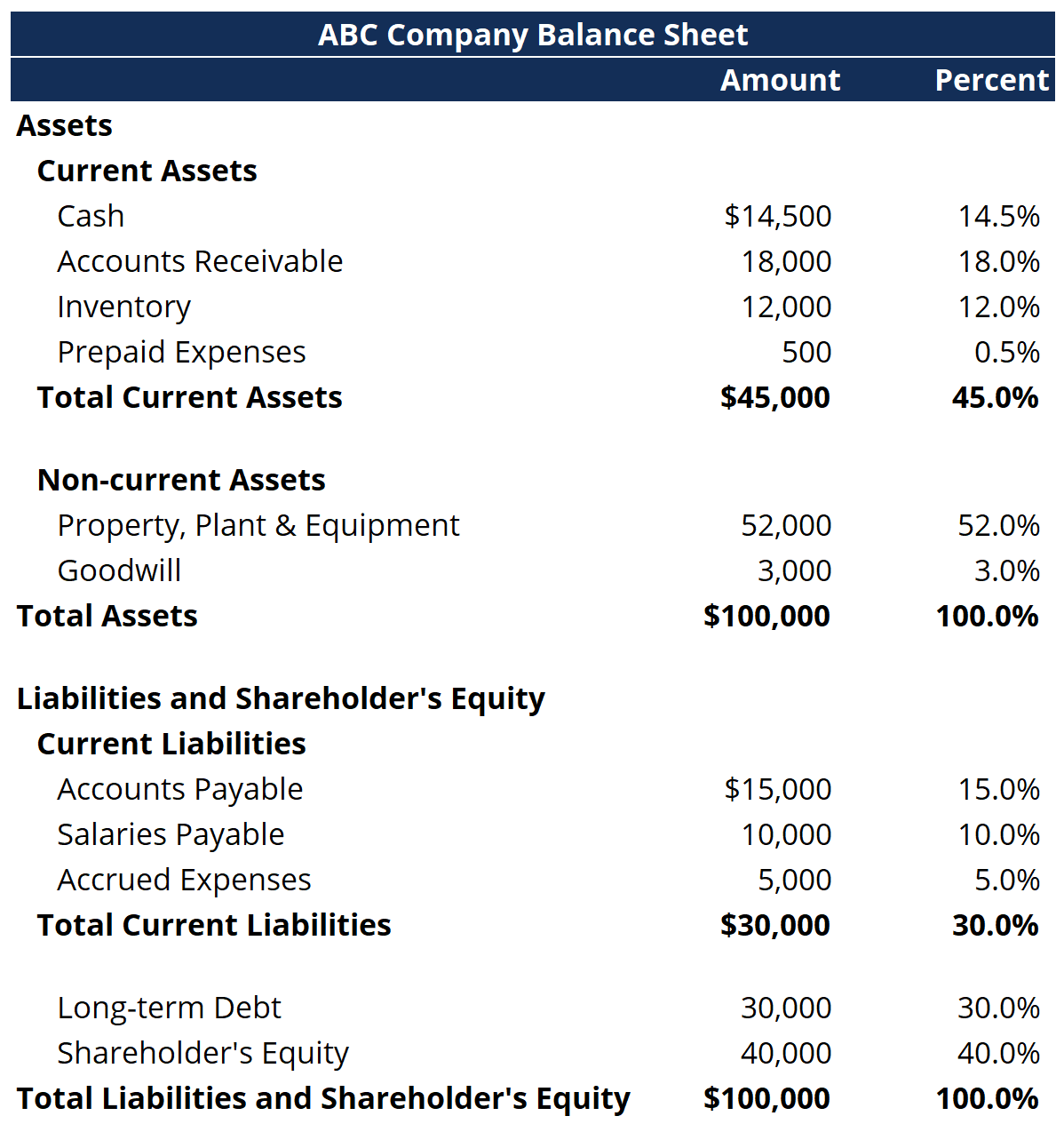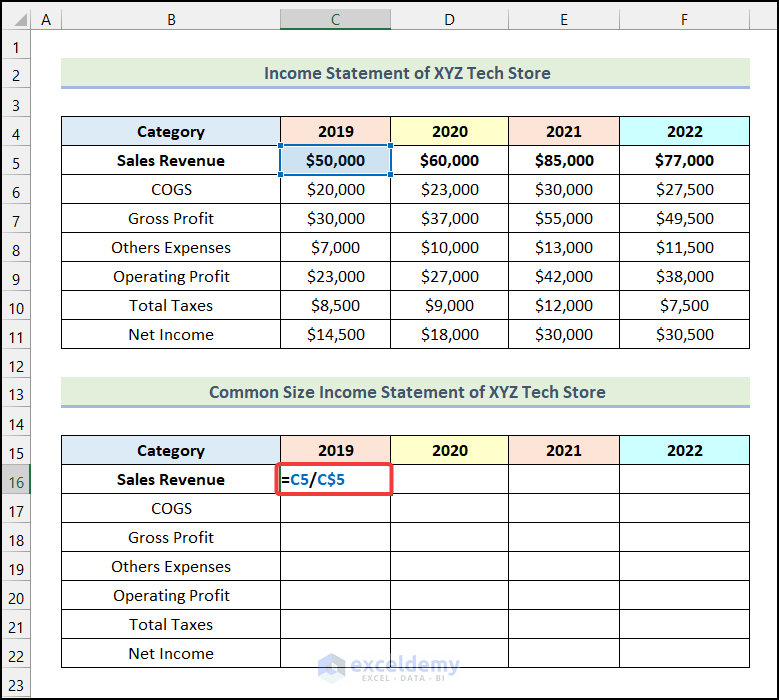How To Common Size A Balance Sheet - A statement that shows the percentage relation of each asset/liability to the total assets/total of equity and liabilities, is. The common size balance sheet formula converts traditional financial statements into a comparative format by dividing each line.
A statement that shows the percentage relation of each asset/liability to the total assets/total of equity and liabilities, is. The common size balance sheet formula converts traditional financial statements into a comparative format by dividing each line.
The common size balance sheet formula converts traditional financial statements into a comparative format by dividing each line. A statement that shows the percentage relation of each asset/liability to the total assets/total of equity and liabilities, is.
How To Create A Common Size Balance Sheet In Excel Design Talk
The common size balance sheet formula converts traditional financial statements into a comparative format by dividing each line. A statement that shows the percentage relation of each asset/liability to the total assets/total of equity and liabilities, is.
Common Size Balance Sheet
The common size balance sheet formula converts traditional financial statements into a comparative format by dividing each line. A statement that shows the percentage relation of each asset/liability to the total assets/total of equity and liabilities, is.
How to Create Common Size Balance Sheet in Excel (3 Simple Steps
A statement that shows the percentage relation of each asset/liability to the total assets/total of equity and liabilities, is. The common size balance sheet formula converts traditional financial statements into a comparative format by dividing each line.
What is a CommonSize Balance Sheet? 365 Financial Analyst
The common size balance sheet formula converts traditional financial statements into a comparative format by dividing each line. A statement that shows the percentage relation of each asset/liability to the total assets/total of equity and liabilities, is.
How to Figure the Common Size BalanceSheet Percentages Online Accounting
A statement that shows the percentage relation of each asset/liability to the total assets/total of equity and liabilities, is. The common size balance sheet formula converts traditional financial statements into a comparative format by dividing each line.
Common Size Balance Sheet Template
A statement that shows the percentage relation of each asset/liability to the total assets/total of equity and liabilities, is. The common size balance sheet formula converts traditional financial statements into a comparative format by dividing each line.
Common Size Balance Sheet Analysis (Format, Examples)
The common size balance sheet formula converts traditional financial statements into a comparative format by dividing each line. A statement that shows the percentage relation of each asset/liability to the total assets/total of equity and liabilities, is.
Common Size Balance Sheet Definition, Formula, Example
The common size balance sheet formula converts traditional financial statements into a comparative format by dividing each line. A statement that shows the percentage relation of each asset/liability to the total assets/total of equity and liabilities, is.
Common Size Analysis Overview, Examples, How to Perform
The common size balance sheet formula converts traditional financial statements into a comparative format by dividing each line. A statement that shows the percentage relation of each asset/liability to the total assets/total of equity and liabilities, is.
How to Create Common Size Balance Sheet in Excel (3 Simple Steps
A statement that shows the percentage relation of each asset/liability to the total assets/total of equity and liabilities, is. The common size balance sheet formula converts traditional financial statements into a comparative format by dividing each line.
The Common Size Balance Sheet Formula Converts Traditional Financial Statements Into A Comparative Format By Dividing Each Line.
A statement that shows the percentage relation of each asset/liability to the total assets/total of equity and liabilities, is.
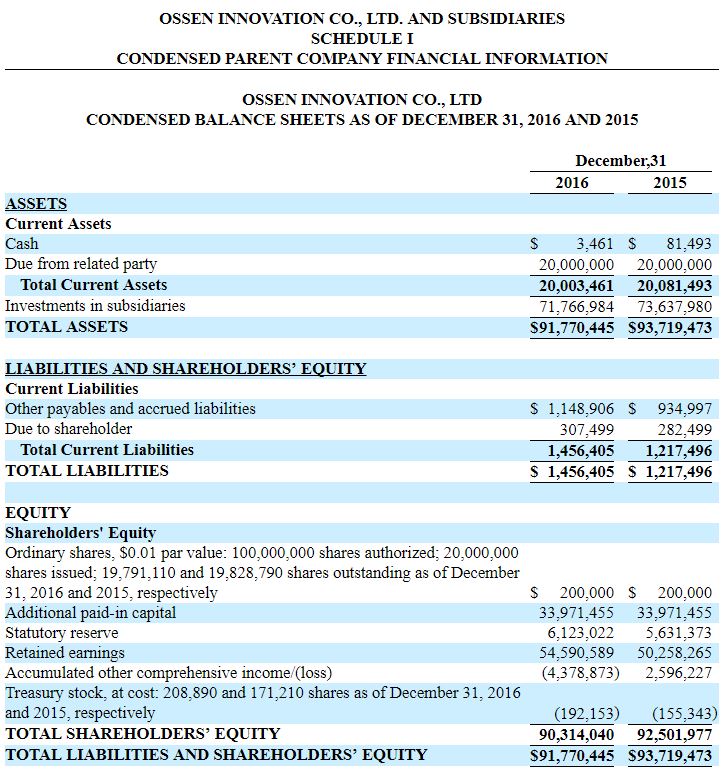
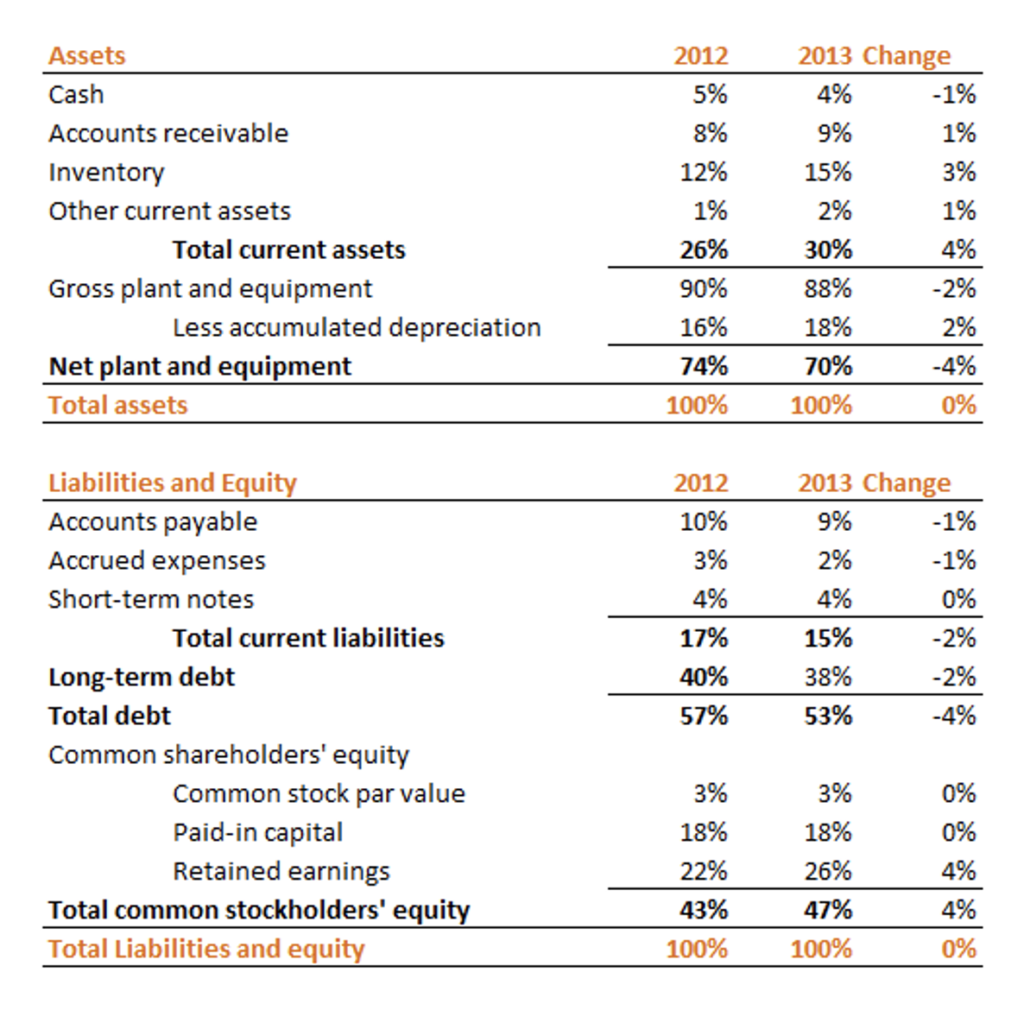
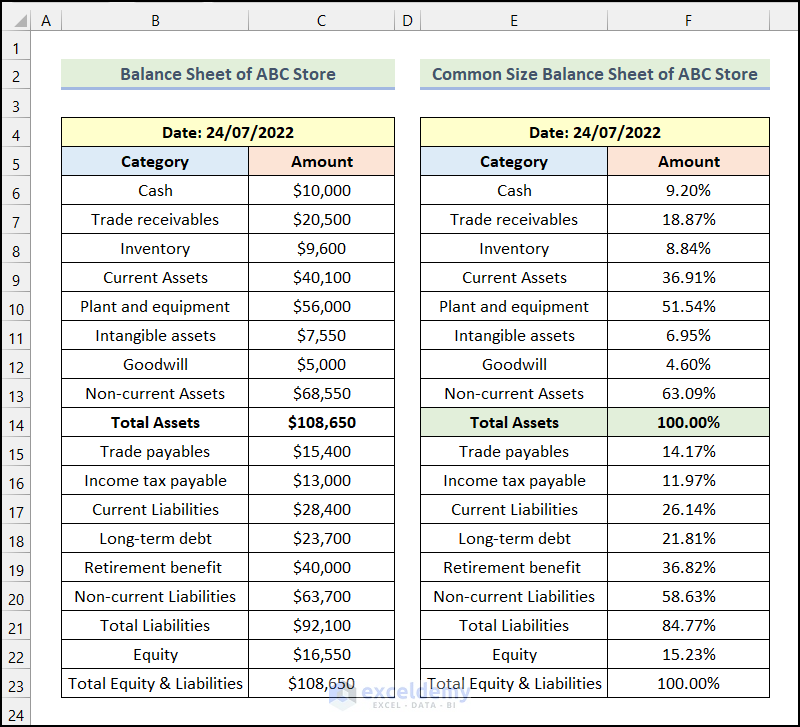
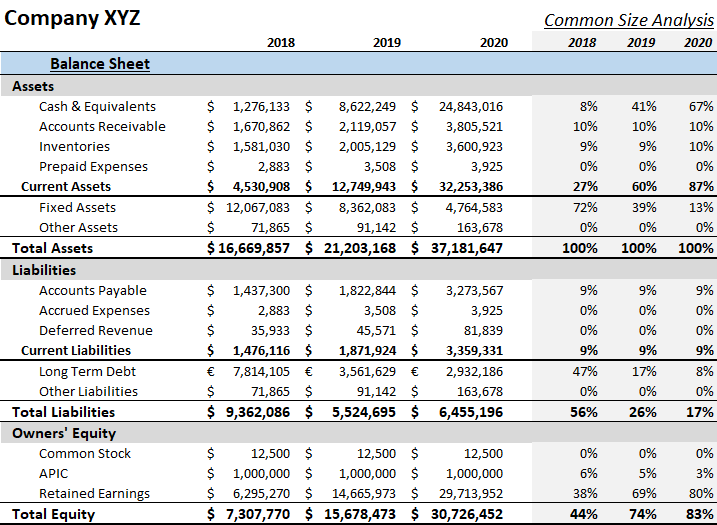
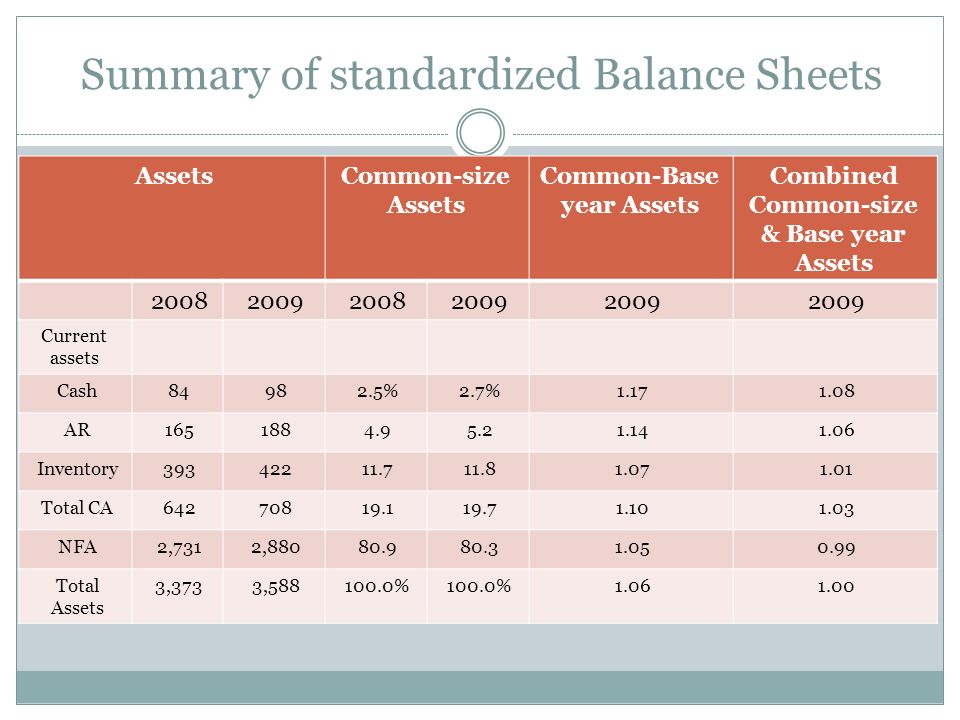

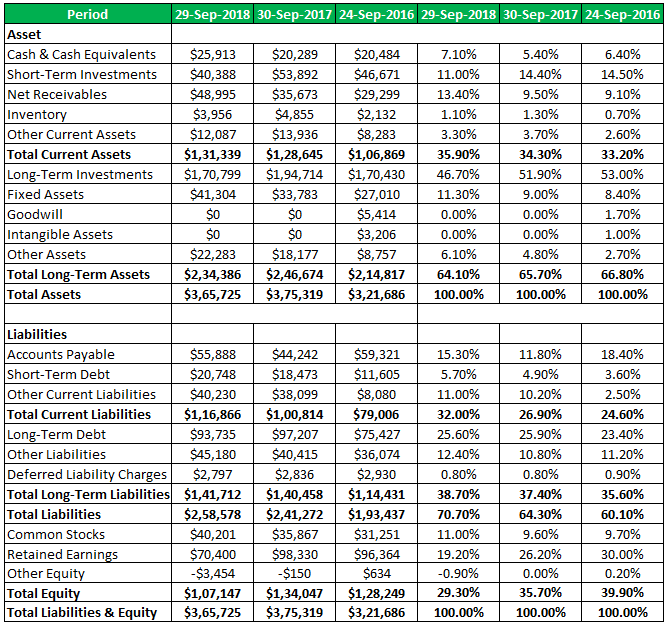
:max_bytes(150000):strip_icc()/Commonsizebalancesheet_final-63f083ed70e64e9da232560ae41429ce.png)
